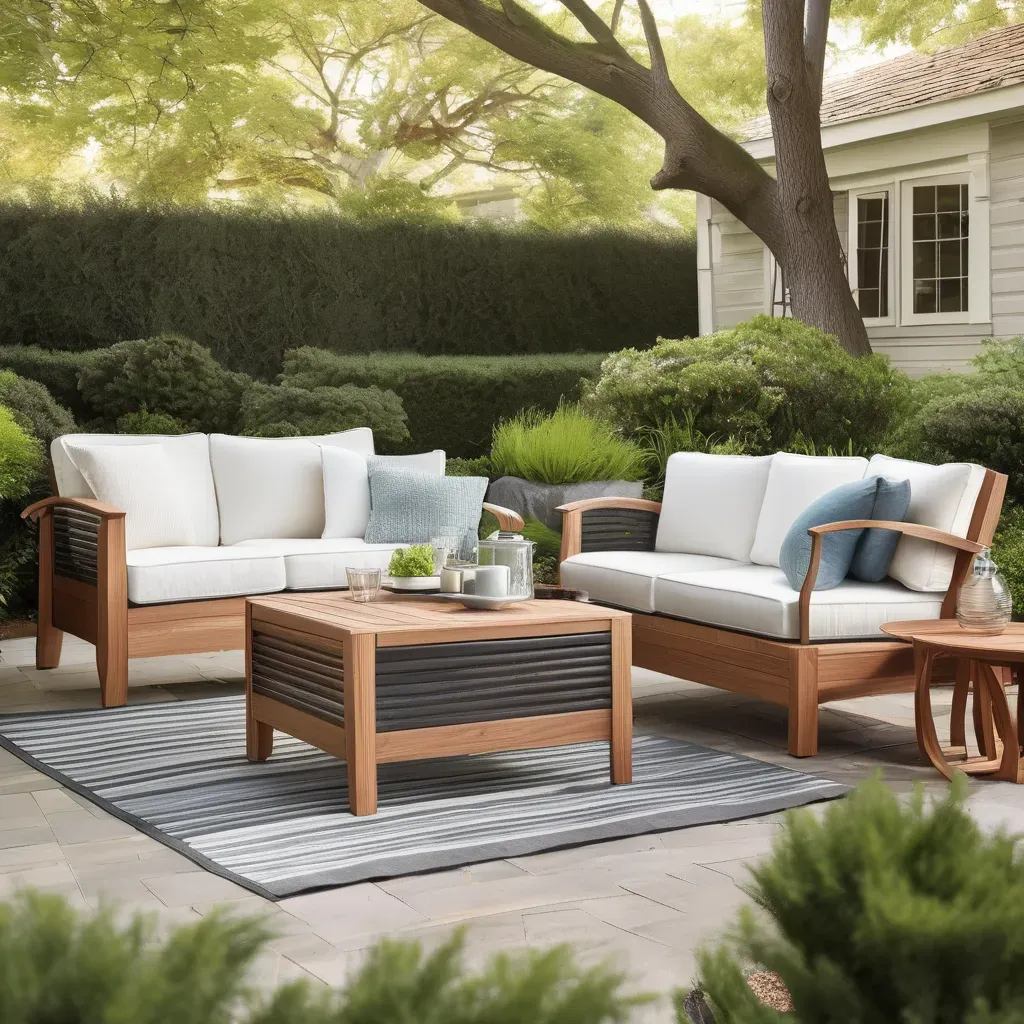Selecting outdoor furniture that can withstand the elements and maintain its appeal throughout the year requires careful consideration. Weather conditions, materials, and design all play crucial roles in determining durability and longevity. In this article, we’ll guide you through the key factors to keep in mind when choosing outdoor furniture that lasts, no matter the season.
1. Consider Weather-Resistant Materials

The most important factor when choosing outdoor furniture is the material. Since your furniture will be exposed to rain, sun, wind, and possibly snow, it’s essential to opt for weather-resistant materials. Teak, for example, is a highly durable hardwood that naturally resists moisture and rot, making it ideal for rainy climates. For sunnier locations, aluminum and stainless steel are excellent choices as they resist rust and corrosion while being lightweight.
Synthetic wicker is another great option, offering the look of traditional rattan but with added resistance to UV rays and moisture, making it perfect for humid or sunny regions. Avoid untreated wood or low-quality metals, as they may degrade quickly under harsh conditions.
2. Look for Fade-Resistant Fabrics

Outdoor furniture is not just about the frame—it also includes cushions and fabric elements. When choosing seating or loungers, opt for cushions made from high-quality, fade-resistant fabrics like Sunbrella or Olefin. These materials are designed to withstand prolonged exposure to UV rays, keeping their color vibrant throughout the year.
In addition to UV resistance, ensure that the fabric is quick-drying and mold-resistant to avoid mildew during rainy seasons. You want fabrics that not only look great but are also easy to maintain, especially when exposed to the elements for extended periods.
3. Focus on Sturdiness and Weight

Durability is often related to the weight and sturdiness of the furniture. Heavy pieces like wrought iron or steel are great for windy areas since they won’t easily tip over or get blown away. On the other hand, lighter materials like aluminum can still provide strength while being easier to move around.
Check the construction quality, especially for folding or collapsible furniture. Well-built hinges and locking mechanisms are essential for longevity. Sturdy outdoor furniture is less prone to wear and tear, ensuring it can handle not just the elements but also regular use.
4. Invest in All-Weather Protection Features

Outdoor furniture should be able to endure all types of weather—hot summers, cold winters, and everything in between. Consider investing in furniture with built-in protection features, such as powder-coated metal to prevent rust or furniture covers for added protection during harsh conditions. Additionally, look for tables and chairs with UV protectant coatings to prevent sun damage.
Having furniture that can resist weathering will save you from frequent replacements and maintenance, offering long-term value for your investment.
5. Maintenance and Care Requirements
Finally, choose outdoor furniture that suits your maintenance preferences. Some materials, like teak and aluminum, are low-maintenance and only require occasional cleaning to stay in good condition. Others, like wrought iron or untreated wood, may need regular refinishing, painting, or oiling to retain their beauty and resist rust or decay.
To extend the life of your outdoor furniture, use weatherproof covers and store cushions indoors when not in use. Regular cleaning and minor repairs can go a long way in preserving your furniture’s appearance and durability year-round.
By taking into account these factors—material, fabric, sturdiness, weather protection, and maintenance—you’ll be able to choose outdoor furniture that offers durability, style, and comfort all year long.
Good web site! I truly love how it is easy on my eyes and the data are well written. I am wondering how I could be notified whenever a new post has been made. I’ve subscribed to your RSS which must do the trick! Have a nice day!